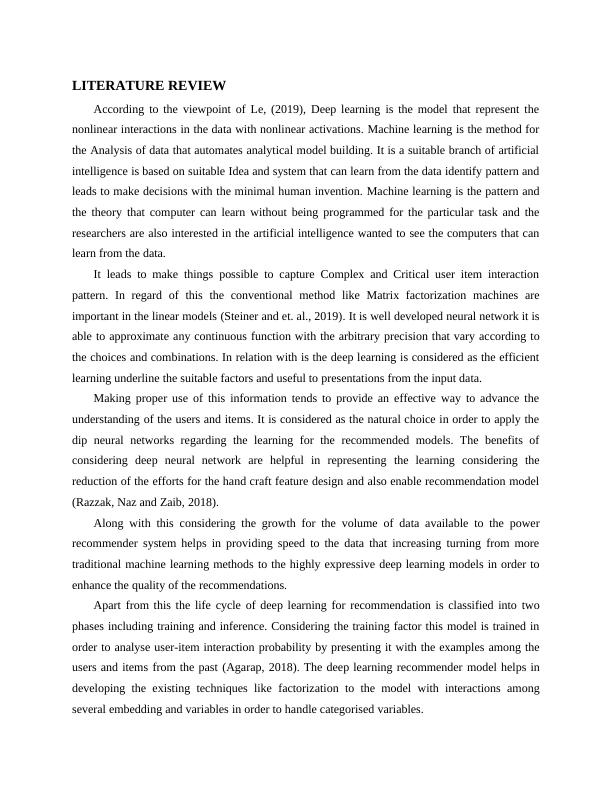Literature Review on Deep Learning for Recommendation Systems
Write a literature review on deep learning and its advancement in recommendation systems for the course AF302 - Information Systems.
5 Pages1450 Words360 Views
Added on 2022-11-28
About This Document
This literature review explores the use of deep learning in recommendation systems, discussing its benefits, applications, and challenges. It covers topics such as user-item interaction patterns, embedding vectors, collaborative filtering, and the impact of deep learning on recommendation quality.
Literature Review on Deep Learning for Recommendation Systems
Write a literature review on deep learning and its advancement in recommendation systems for the course AF302 - Information Systems.
Added on 2022-11-28
ShareRelated Documents
End of preview
Want to access all the pages? Upload your documents or become a member.
Natural Languages Processing Assignment 2022
|11
|2072
|23
Frontiers in Computational Neuroscience
|5
|691
|18
MODELING & COMPUTING TECHNIQUES
|20
|5570
|13
Modeling & Computing Techniques: Machine Learning and Artificial Intelligence
|21
|5450
|14
Paired Facial Matching With Age and Gender Prediction | Report
|8
|2417
|9
Artificial Intelligence on Emerging Trends of Technology
|21
|1514
|210


